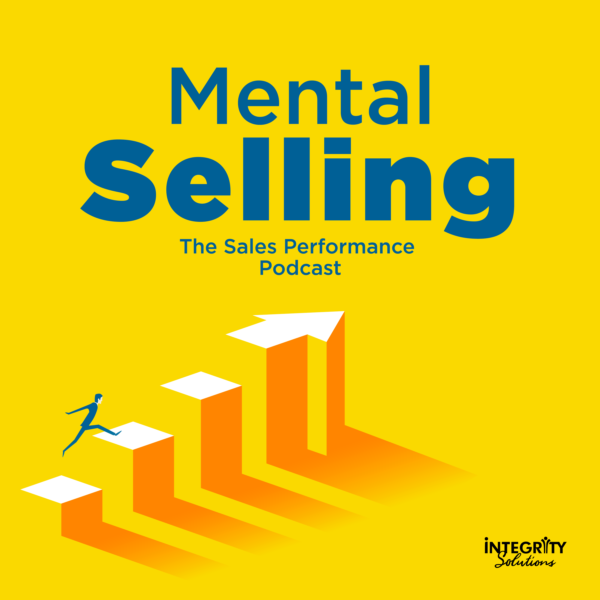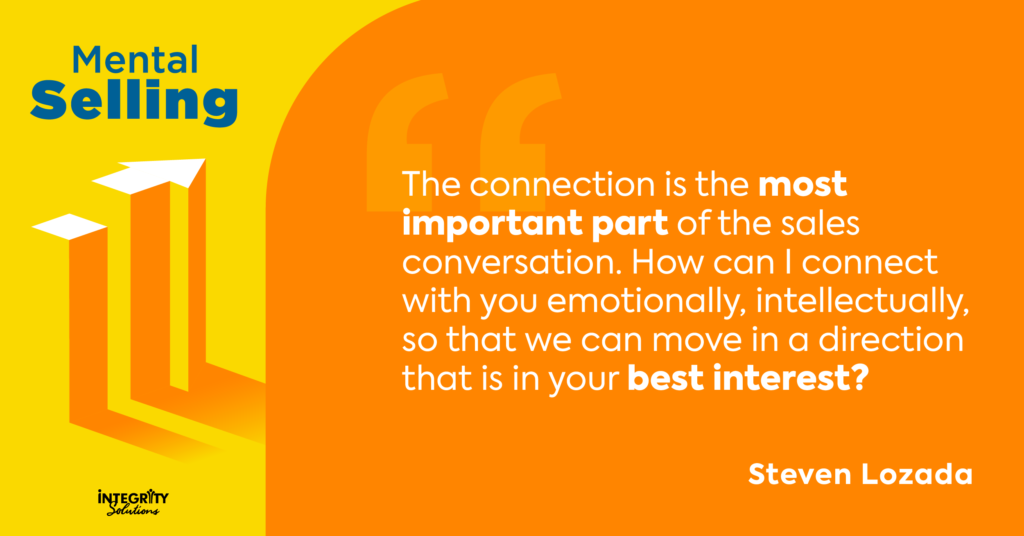

In this insightful and informative episode, we dive into:
- How forging a connection is the most important part of sales conversations
- Elevating your trust equity
- Rejection-free openings and why objections are actually a gift
- The power of “no-oriented questions”
- How to keep customer conversations moving forward without being manipulative
Join us on this latest episode of Mental Selling to learn more about being more present in sales conversations with customers and understanding that different communication styles also mean different listening styles. If you want to master the sales conversation, learn to improvise and adapt, listen and choose your words carefully, be present and a partner — and always understand that the buyer is in control. Check out the full episode! Click the link above!
Forging customer connections
As a jazz musician, Steven learned how to improvise long ago.
And that skill has translated to sales, allowing him to quickly forge a connection with the person on the other side of the conversation.
Seems far-fetched?
Well, think about it this way:
In jazz, you are constantly improvising, but in order to do so, you need to master the chord structure of the piece, which allows you to pull out the right scales and melodic line to play over each individual chord.
In sales, your chord progression is made up of your goals and where you want sales conversations to head. As long as this is always in the back of your mind, you can remain present for every other part of the conversation and, of course, improvise and adapt to the conversational flow.

Being present can’t be overstated in sales conversations. How often have you enjoyed an interaction with a salesperson who doesn’t pay attention to you and, instead, just takes every opportunity to push you towards a sale?
Do you ever end up buying from that person?
We connect with those who are present and attentive to the nuances of a conversation — not those who try to brute force the square peg of the conversation into a predetermined round-hole goal.
That doesn’t mean you don’t have a goal — you want to make the sale — but to get there, you need to play the changes in the conversation. After all, it’s the melody that makes us connect to music.
And if you nail the conversational melody, you can forge a connection that will ultimately help you achieve your goals without ramming them down your audience’s throat.
“When we’re able to utilize words in a strategic, compassionate way, and we’re able to connect to the other person’s communication style, we’re able to elevate trust equity.”
– Steven Lozada
Elevating your trust equity
There is one mindset shift that will help almost anyone level up their conversational intelligence:
Understand that different communication styles also mean different listening styles.
Too often, we look at the communication styles of others as merely addressing their manner of speaking — which is also important: It allows us to adapt how we listen.
But when we realize that the same diversity of communication styles is present for how we listen, we can optimize our own speech to be clearer, more persuasive and more engaging for our audience.
If we put in the effort to connect with each other’s communication styles — when speaking and when listening — everybody wins.
And the worlds our words create will be that much better for it.
Rejection-free openings & the “gift” of objections
Another useful tool in Steven’s conversational toolbox is a concept, originally coined by Phil M. Jones, known as “rejection-free openings”.
A rejection-free opening is a rhetorical device that allows you to get started on the right foot in a conversation you may otherwise not know how to begin and, perhaps more importantly, avoid being shut down at the outset.
Instead of leading with a question bluntly asking your potential buyer if they are interested in the product — opening the door for them to simply say “nope, not at all” — you lead with a phrase that gets the conversational ball rolling.
One of Steven’s favorite examples?
“I’m guessing you haven’t gotten around to…”
This indicates that you understand the other person is busy and that you are giving them the benefit of the doubt, but, more importantly, this helps you avoid the instant rejection (or the fear of one) that something like “do you have time to talk?” can potentially set you up for.
Of course, that doesn’t mean you want to engineer the conversation so there is never room to object — you can’t make the sale without opening up the possibility. And you wouldn’t want to anyway, because the majority of objections are gifts that you want in a sales conversation.
For Steven, that’s because objections indicate that the would-be buyer is about to make a decision… but they’re stuck. They know that what they’re being offered might work, but they need more to get them to purchase.
And that’s a gift to any salesperson because it’s an invitation to provide the buyer with whatever they’re missing. If you recognize this gift, then every objection is a chance to partner with your buyer, rather than a conversational landmine that pits you against one another.
Embracing the Word “no” in Sales
Similarly, Steven also says sellers need to stop fearing the word “no,” and embrace it as another gift.
In fact, he believes so strongly that it is a gift, he urges sellers to use “no-oriented questions” to provide even more opportunities for the buyer to use the word. It may seem counterintuitive, but it works.
Why?
Because saying “no” makes you feel in control.
And you want your buyer to feel like they are in control for a couple of reasons:
- You want to forge that all-important meaningful connection we covered earlier.
- Ultimately, the buyers are the ones in control.
In a sales conversation, it’s the buyer who decides whether the sale gets made, not the seller. Sure, you can influence their decision — otherwise, you wouldn’t be reading this — but that influence is most powerful when it’s applied with authenticity, integrity and honesty.
And if you’ve been honing your conversational intelligence, you understand that these things are impossible to achieve if you’re trying to wrest that control from the buyer.
So, if you want to master the sales conversation, learn to improvise and adapt, listen and choose your words carefully, be present and a partner — and always understand that the buyer is in control.
Sales Conversations Podcast Related Links
Follow Steven on LinkedIn
Upward Mindset website
Follow Steven on Twitter
Raise your Mental Selling acumen with us by following us on Apple Podcasts, Google Podcasts SoundCloud, Amazon, iHeartRadio, Spotify, Stitcher or wherever you get your podcasts. Please rate our show or leave a comment— we value YOUR feedback! FeedSpot has also included us as one of the top 30 best sales podcasts to follow.

